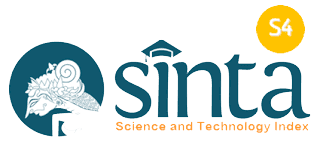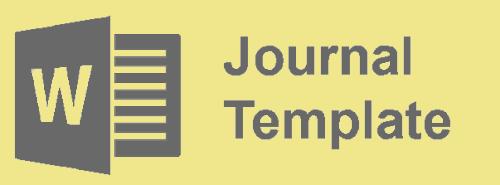Factors Influencing Decision Making in the Regional House of Representatives
(1) STIE Nobel Indonesia Makassar, Makassar, South Sulawesi, Indonesia
(2) Universitas Puangrimaggalatung, Sengkang, South Sulawesi, Indonesia
(*) Corresponding Author
DOI: https://doi.org/10.26858/pdr.v4i2.22567
Abstract
This study aims to determine the factors that influence decision making. The location of the research was carried out in the office of the agency for the formation of regional regulations, Regional House of Representatives (Indonesia: Dewan Perwakilan Rakyat Daerah / DPRD) of Takalar district. The sample used in this study were members of the DPRD of Takalar Regency with a sample of 52 people, the research method used in this study was the quantitative method. The results of this study prove that, 1) there is a significant positive influence between knowledge management with decision making, 2) There is a significant positive influence between Learning Organization and decision making, and 3) There is a positive and significant influence on talent management with decision making.
Keywords
Full Text:
PDFReferences
Ahmad, K., Dirawan, G. D., Akib, H., Kahar, F., & Malik, T. (2015). Knowledge problem of collaboration in regional development planning (case in Mamuju regency). International Journal of Applied Business and Economic Research, 13(4), 1721–1736.
Attems, M.-S., Thaler, T., Snel, K. A. W., Davids, P., Hartmann, T., & Fuchs, S. (2020). The influence of tailored risk communication on individual adaptive behaviour. International Journal of Disaster Risk Reduction, 49, 101618. https://doi.org/https://doi.org/10.1016/j.ijdrr.2020.101618
Bontis, N. (2001). Assessing knowledge assets: a review of the models used to measure intellectual capital. International journal of management reviews, 3(1), 41–60.
Castaneda, D. I., Manrique, L. F., & Cuellar, S. (2018). Is organizational learning being absorbed by knowledge management? A systematic review. Journal of Knowledge Management, 22(2), 299–325. https://doi.org/10.1108/JKM-01-2017-0041
Chong, M. C., Francis, K., Cooper, S., Abdullah, K. L., Hmwe, N. T. T., & Sohod, S. (2016). Access to, interest in and attitude toward e-learning for continuous education among Malaysian nurses. Nurse Education Today, 36, 370–374. https://doi.org/https://doi.org/10.1016/j.nedt.2015.09.011
Çınar, F., & Eren, E. (2015). Organizational Learning Capacity Impact on Sustainable Innovation: The Case of Public Hospitals. Procedia - Social and Behavioral Sciences, 181, 251–260. https://doi.org/https://doi.org/10.1016/j.sbspro.2015.04.886
Cvitanovic, C., Hobday, A. J., van Kerkhoff, L., Wilson, S. K., Dobbs, K., & Marshall, N. A. (2015). Improving knowledge exchange among scientists and decision-makers to facilitate the adaptive governance of marine resources: a review of knowledge and research needs. Ocean & Coastal Management, 112, 25–35.
Doyle, M. (1995). Organizational transformation and renewal: A case for reframing management development? Personnel Review, 24(6), 6–18. https://doi.org/10.1108/00483489510097912
Edwards, G. (2017). Introduction to public administration. Library Press. https://doi.org/10.1111/j.1747-1346.2009.00216-1.x
Klein, J. (2002). Beyond competitive advantage. Strategic Change, 11(6), 317.
Lin, H. (2007). Knowledge sharing and firm innovation capability: an empirical study. International Journal of manpower.
Mahmood, T., & Mubarik, M. S. (2020). Balancing innovation and exploitation in the fourth industrial revolution: Role of intellectual capital and technology absorptive capacity. Technological Forecasting and Social Change, 160, 120248. https://doi.org/https://doi.org/10.1016/j.techfore.2020.120248
Pfeffer, J. (1994). Competitive advantage through people. Boston/Mass.
Porter, M. E. (1990). The Competitive Advonioge of Notions. Harvard business review.
Ramsden, P. (2003). Learning to teach in higher education. Routledge.
Saggaf, M. S., Salam, R., & Rifka, R. (2017). The Effect of Classroom Management on Student Learning Outcomes. International Conference on Education, Science, Art and Technology, 98–102.
Selamat, A., Alias, R. A., Hikmi, S. N., Puteh, M., & Tapsi, S. M. (2017). Higher education 4.0: Current status and readiness in meeting the fourth industrial revolution challenges. Redesigning Higher Education towards Industry, 4, 23–24.
Senge, P. M. (1990). The art and practice of the learning organization. New York: Doubleday.
Senge, P. M. (1996). Leading learning organizations: The bold, the powerful, and the invisible. Center for Organizational Learning, Massachusetts Institute of Technology ….
Slater, S. F., & Narver, J. C. (1995). Market orientation and the Learning Organization. Journal of marketing, 59(3), 63–74.
{
Article Metrics
Abstract view : 142 times | PDF view : 25 timesRefbacks
- There are currently no refbacks.
Copyright (c) 2021 Muh. Said, Mustaking Mustaking


































